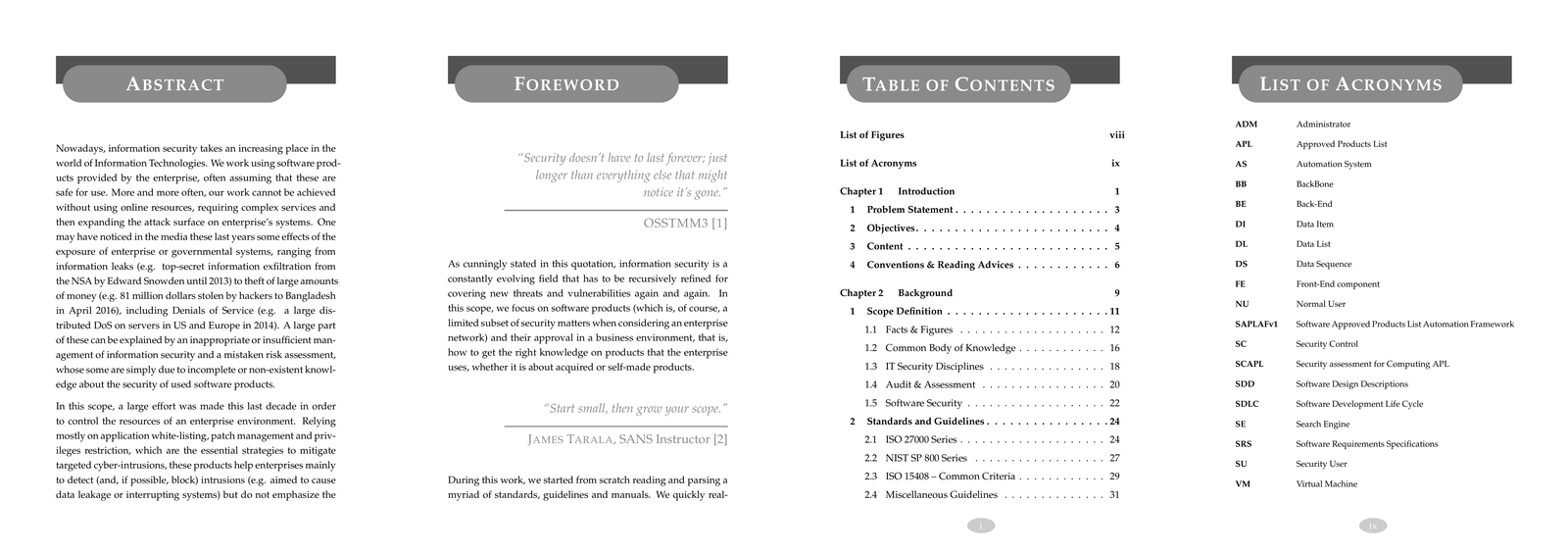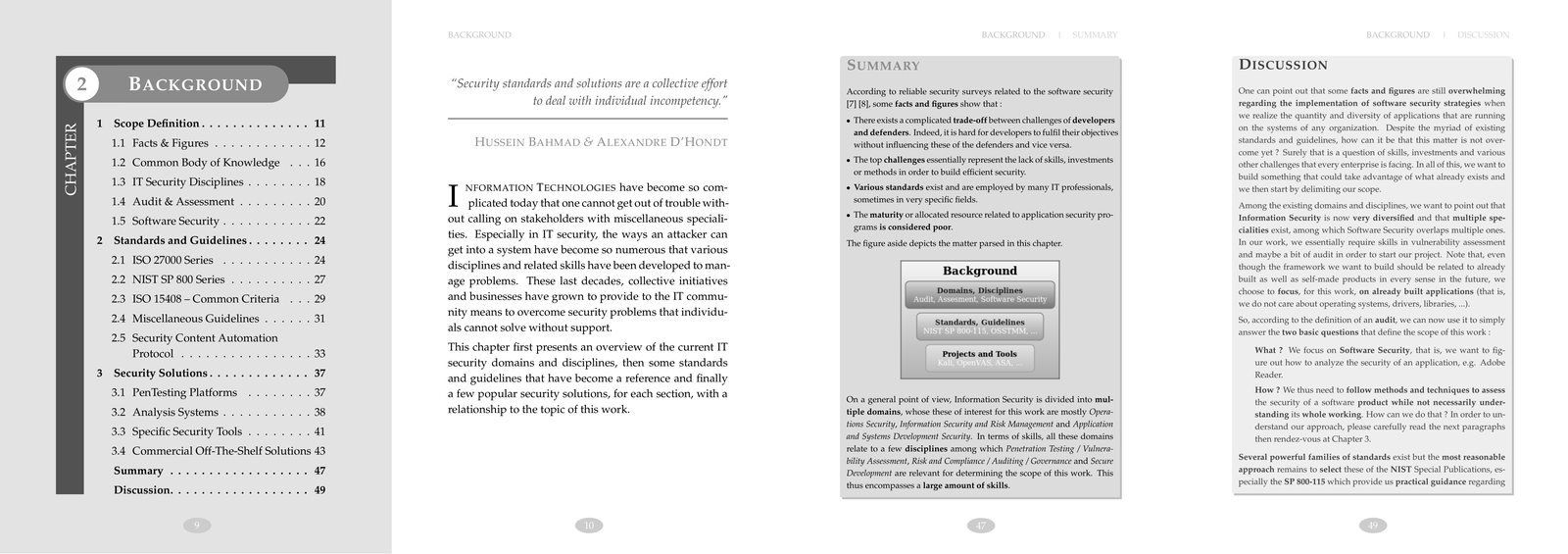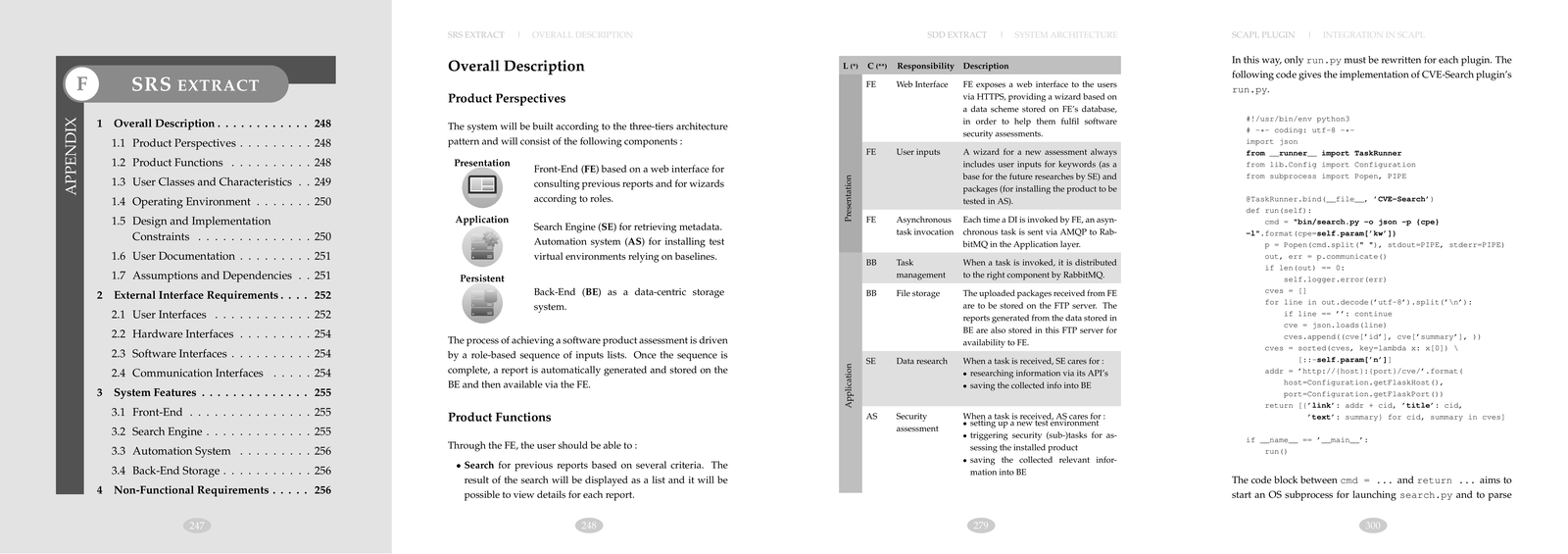Table of Contents
Introduction
The goal of this template is to provide a nice-looking book layout, easy to configure and fill in.
Here is an example preview for the table of content, and other main document items:

Preview image generated with this tool
Here is an example preview for chapter items, including the chapter heading, summary and discussion pages:

Preview image generated with this tool
Here is an example preview for appendix items, including the appendix heading with a mini table of content:

Preview image generated with this tool
Structure
The template is structured in the following way:
main.tex: This is the main TeX file to be compiled. Here you can include chapters, parts and appendices and also configure some settings (e.g. printable version).appendices: This folder contains the appendices, one TeX file for each of them, to be included inmain.tex.chapters: This folder contains the chapters, one TeX file for each of them, to be included inmain.tex.figures: This folder is aimed to contain the figures (that is, the pictures to be captioned that are included in the list of figures).icons: This folder is aimed to contain icons that are used without captions, e.g. these included with special text boxes (liketip).parts: This folder contains every part other than chapters or appendices (i.e. abstract, foreword, references, acronyms, …), one TeX file for each of them, to be included inmain.tex.styles: This folder contains the available styles. Most of the included one should not be edited.
This structure follows the same one as for this master thesis template.
This particular template features a style especially designed for publishing at Lambert Academic Publishing,
style/lap-publishing-book.sty.
Compilation
The compilation can easilly be configured in Texmaker by defining a Quick Build Command:
- Go to the menu Options
- Select Configure Texmaker
- Go to tab Quick Build
-
In the field User : (…), replace the command with:
pdflatex -synctex=1 -interaction=nonstopmode %.tex|makeindex %.idx -s styles/index.ist|bibtex %.aux|makeglossaries %|pdflatex -synctex=1 -interaction=nonstopmode %.tex|pdflatex -synctex=1 -interaction=nonstopmode %.tex - Then click OK
When editing the book with Texmaker:
- Open
main.tex - Go to the menu Options
- Select Define Current Document as “Master Document”
- Open
main.idxfor edition - Click on Quick Build to compile
This will produce main.pdf with all the included chapters, parts and appendices.
Making your book
Tuning parts
This template includes multiple pre-filled (self-explanatory) part files of the dissertation, whose some are to be adapted and others should not be modified.
Parts that you should adapt:
parts/abstract.texparts/acknowledgements.texparts/acronyms.texparts/bibliography.bibparts/foreword.texparts/glossary.tex
Parts that you should not adapt:
parts/index.texparts/lof.texparts/references.texparts/toc.tex
Adding chapters
This template has a particular layout for chapters. Each of them starts with a chapter cover page with:
- Above: the chapter title.
- On the left column: an upper and a lower paragraph.
- On the right column: the mini table of content for the chapter.
In LaTeX, this is structured like the following:
\begin{chaptercover}%
{Chapter title}%
{Left column upper paragraph}%
{Left column lower paragraph}%
{chapter-reference}
Your chapter content.
\end{chaptercover}
Once you have written your new chapter in chapters/my-chapter.tex, do not forget to include it in main.tex (insert a line \include{chapters/my-chapter} where relevant).
Adding appendices
This template also features a particular layout for appendices. As matters separated from the main thread, they do not have cover pages but a mini table of content as well.
In LaTeX, this is structured like the following:
\begin{appchaptercover}%
{Appendix title}%
{app:appendix-reference}
Your appendix content.
\end{appchaptercover}
Related Projects
You may also like these:
- TeX Cheat Sheet Template: A template for creating a nice cheat sheet with LaTeX.
- TeX Course Index Template: A template for writing a condensed course index leveraging LaTeX indexing.
- TeX Master Thesis Template: A template for writing a nice master thesis dissertation with LaTeX.
- TeX Poster Template: A template for creating a nice scientific poster with LaTeX.
- TeX Slideshow Template: A template for making a nice presentation with LaTeX.